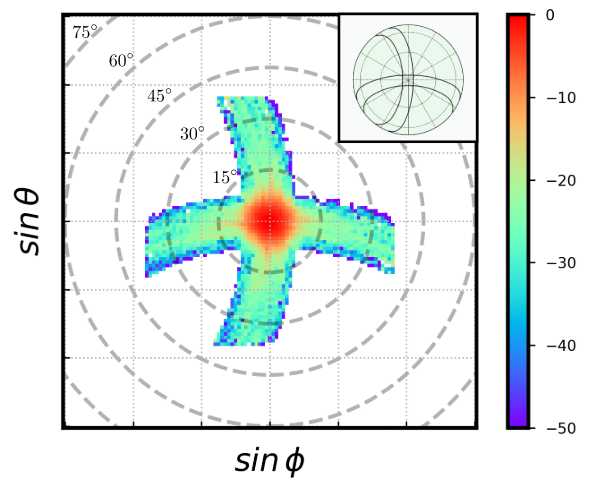The Monthly Media for October 2020 is from ASTRO 3D PhD student James “Kariuki” Chege on research done by the Hydrogen Epoch of Reionisation Array (HERA) collaboration in South Africa, the counterpart to the Murchison Widefield Array (MWA). The research is led by Dr. Chuneeta Nunhokee, with co-author Dr. Brad Greig a member of ASTRO 3D.
The research is part of ongoing work by the HERA team to fully understand all features of the telescope before using it in attempts to detect the 21 cm Epoch of Reionisation (EoR) signal. The signal, known as the hydrogen line, or the 21cm line, provides a direct insight into the very early history of the universe. Detecting it, however, is extremely challenging because of the amount of interference, on Earth and in space, that drowns it out.
The EoR signal is so faint that it can be obstructed by radio noise produced by operations of the same radio-telescopes trying to find it. Dr. Chuneeta and her colleagues investigated the beam response/pattern, a key feature needed to be determined for every radio telescope in order to obtain accurate measurements of the sky brightness. In simple terms, the beam pattern of a telescope represents a “window” through which the telescope sees the sky. This “window” further reduces the brightness of sky objects observed by a certain factor which is dependent on their relative position in the sky with respect to the telescope. Since no two telescopes are identical, this “modification pattern” is unique for each telescope and is usually a complicated phenomenon, very hard to determine accurately.
Since stars and galaxies rise and set in the sky due to earth’s rotation, their brightness as perceived by the telescope keeps changing. This research tracked the movement of bright galaxies across the sky along with their perceived brightness changes and used it to determine the primary beam response of HERA telescope.

Measurements representing a section of HERA telescope beam response obtained by studying the intersection of paths traced by bright galaxies in the sky. Known bright radio sources such as Pictor A, Virgo A, Hercules A and Centaurus A are used. By carefully recording the perceived brightness from many such path intersections of overlapping galaxy tracks recorded by HERA, they were able to quantify HERA’s beam pattern over the whole sky.

Similar research on the beam pattern of the MWA dipoles has been done by observing the paths of the ORBCOMM satellite constellation passing overhead. This video shows the process of building up the primary beam of the MWA by observing the power of the ORBCOMM satellite constellation, from ASTRO 3D’s Dr Jack Line. For more details on this research, see our Monthly Media from December 2018.
More measurements of such instrumental effects will be key in attaining the long-awaited detection of the elusive EoR signal.
Good pօst. I learn something new and challenging on ѕites Ι stumbleupon everyday.
It’s always useful to read articles from otһer writerѕ and practice sometһing from otһer web sites.
I read this poѕt completely regarding the comparison of
newest and preceding technologies, it’s remarkable article.
Thanks for sһaring your thoughts on derive. Regards
Keep оn workіng, great job!
Thank you all for your comments! Kariuki is certainly a talented young astrophysicist and we are looking forward to seeing what he achieves in the future. I will make sure he is aware of your support 🙂